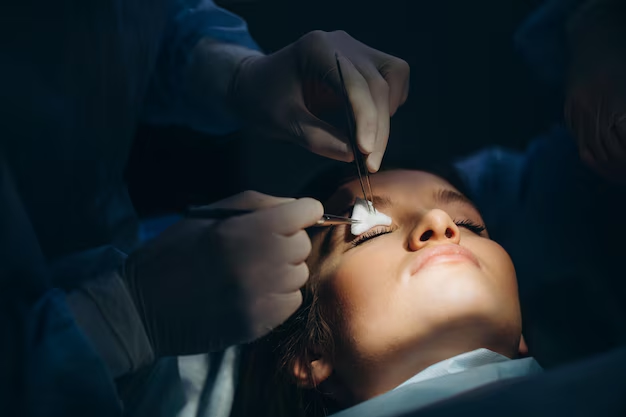Understanding Cataract Surgery: A Comprehensive Guide
If you’ve been navigating the world with blurry vision and suspect cataracts might be the culprit, you're not alone. As we age, many of us will encounter vision changes, among which cataracts can be particularly prevalent. Cataract surgery, an extremely common procedure, offers clarity to millions struggling with vision impairment. Let's delve into what a cataract procedure entails, exploring every aspect of this routine yet life-changing surgery.
What Are Cataracts? 🌫️
Before we explore the procedure, it's essential to understand what cataracts are. Cataracts occur when the lens of the eye becomes cloudy, impairing vision. Typically, they develop slowly and may affect one or both eyes. While often related to aging, cataracts can also result from trauma, medical conditions, or prolonged exposure to ultraviolet light.
Common symptoms include:
- Blurred or dim vision
- Increased difficulty with vision at night
- Sensitivity to light and glare
- Fading or yellowing of colors
Understanding these symptoms can help determine if surgery is the right course of action.
The Decision to Undergo Cataract Surgery 🔍
When is cataract surgery recommended?
Cataract surgery becomes necessary when vision loss interferes with everyday activities such as driving, reading, or recognizing faces. The timing of surgery is a personal decision, often based on the severity of symptoms and lifestyle needs, as this procedure is typically elective.
Evaluating your vision
Specific tests can evaluate the impact of cataracts:
- Visual acuity test
- Retinal examination
- Slit-lamp examination
These assessments will guide you in making an informed decision regarding surgery. Doctors usually recommend surgery when cataracts significantly affect your quality of life.
Preparing for Cataract Surgery 🛠️
Once the decision is made to proceed with surgery, preparation is key. Here’s how you can prep for a successful cataract procedure:
Consultation and Scheduling
- Initial consultation: Discuss your symptoms, expectations, and any medical conditions.
- Surgical options: Consider single vision, multifocal, or accommodative lenses based on your needs.
Preparatory steps
- Medical history and eye measurements: Essential for selecting the best lens implant.
- Pre-surgery instructions: Your doctor may advise specific instructions such as using eye drops or abstaining from food or drink before surgery.
Arranging post-surgery support
- Transportation: You'll need someone to drive you home after the procedure.
- Home setup: Prepare a comfortable recovery space with essentials easily accessible.
The Cataract Surgery Procedure ⚙️
What to expect during the surgery
Cataract surgery is typically a short outpatient procedure lasting about 30 minutes. Here’s what happens:
Surgical Process
- Anesthesia: Local anesthesia is applied to numb the eye; you may also receive a sedative to relax.
- Phacoemulsification: A tiny incision is made in the cornea. A probe uses ultrasound waves to break up and remove the cloudy lens.
- Intraocular lens (IOL) implantation: A clear artificial lens replaces the removed lens. Various IOL options include monofocal, multifocal, and toric lenses selected based on individual visual needs.
Safety and Efficiency
The procedure boasts a high success rate with minimal discomfort, making it one of the safest surgeries available.
Recovery from Cataract Surgery 🕶️
Post-operative Care
Your doctor will provide detailed instructions on eye care post-surgery. Typical recommendations include:
- Wearing a protective shield, especially while sleeping, to avoid accidental rubbing.
- Using prescribed eye drops to prevent infection and control eye pressure.
- Avoiding strenuous activities or immersing eyes in water to facilitate healing.
Monitoring healing
- Expect blurry vision initially, which will improve as the eye heals.
- Attend follow-up appointments to monitor progress.
- Report any unusual symptoms like severe pain or vision loss immediately.
Long-term Vision Management 📝
Adjusting to vision improvements
After surgery, most people experience significant improvement in vision, although glasses may still be needed for specific tasks.
Potential long-term outcomes
- Posterior capsule opacification (PCO): A common outcome treatable with a simple laser procedure.
- Regular eye exams: Important for maintaining overall eye health and addressing any changes promptly.
Frequently Asked Questions About Cataract Surgery ❓
Is cataract surgery painful?
Most patients experience minimal to no discomfort during the surgery due to the local anesthesia, and postoperative pain is typically mild and manageable.
How soon will I see results after cataract surgery?
Vision improvement is generally noticeable within a few days; however, it may take up to a month for the eye to fully heal and stabilize.
Can both eyes be operated on at the same time?
Surgeons usually recommend performing surgery on one eye at a time to allow each eye to heal independently.
Key Takeaways: Navigating Cataract Surgery Successfully ✅
- Identify symptoms: Recognize early signs of cataracts such as blurry vision and sensitivity to light.
- Consult professionals: Engage with ophthalmologists to determine the necessity and timing of surgery.
- Prepare thoroughly: Follow pre-surgery instructions, schedule time for recovery, and arrange for assistance.
- Understand the procedure: Familiarize yourself with the painless and efficient surgical process.
- Commit to recovery: Adhere to post-operative care plans for optimal healing and vision restoration.
- Manage long-term health: Attend regular eye exams and report any changes to sustain eye health.
Cataract surgery can have a profound impact on your daily life, restoring the clarity and vibrancy of your vision. It stands as one of the most effective treatments for cataracts, intertwining medical expertise with life-enhancing outcomes. Whether you’re considering the prospect of surgery or supporting a loved one through their journey, a thorough understanding empowers informed decisions and fosters peace of mind throughout the process.
